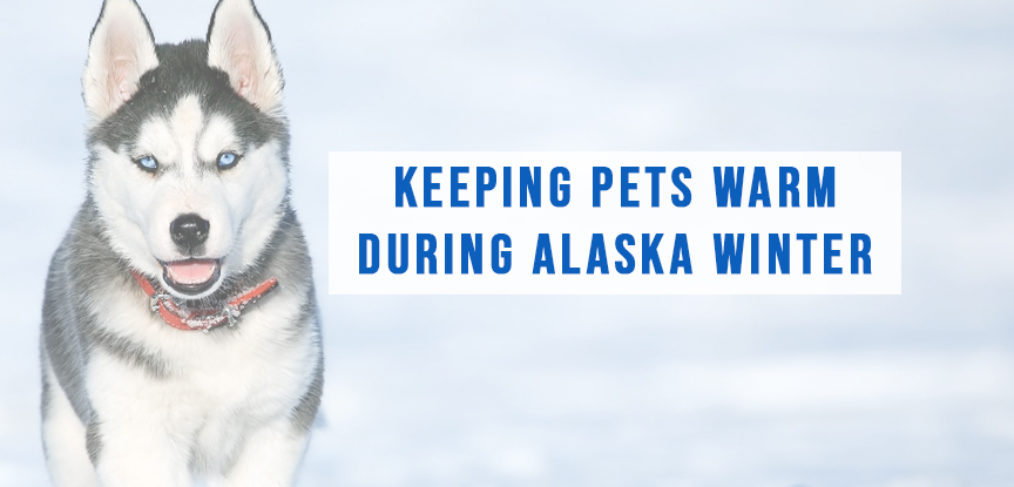
Keeping Pets Warm During Alaska Winter
Alaska is an extreme place to live, especially for pets. Winter’s freezing temperatures, long nights and large amounts of ice and snow can be harsh, if not deadly, and it’s important to take the right precautions in keeping pets warm, safe and healthy this season.
Safety starts with keeping track of your animals. No matter how well trained they are, local regulations require all domestic animals be restrained to their own property. This goes for cats, dogs, chickens, rabbits and so on. This protects animals from getting lost, injured, frostbite, falling through ice or freezing to death when they can’t be found.
Even though dogs get pretty excited when they see the first snow, a good question to ask is…
How cold is too cold?
For owners of small breed dogs, puppies, senior dogs, or thin haired breeds, anytime temperatures are at or below 32°F, it’s time for protection. Once it drops to below 20°F, all dog owners should at least be aware of their dog’s well-being and look for signs that your dog is too cold, even if they are a breed that can take the cold weather.
Use common sense and watch your pets for clues. If they are shivering, refusing to come out of their shelter, or a curled position and not very responsive, it’s probably too cold.
If your animals have shelters outside to stay in, make sure they are equipped to keep them warm. They should be raised off the ground to provide space between them and the frozen ground. A thick layer of dry straw is good for insulation. It should be monitored and changed often, as it will get wet from melting snow and lose its ability to insulate pets from the cold. Heated pet beds can provide additional warmth and comfort for pets.
More winter safety tips for pets
Keeping pets visible during the long, dark hours by outfitting them with highly visible reflective or glow-in-the-dark collars, leashes and even battery-powered blinkers that stand out, will help keep them safe.
Protect paws from damage by ice, snow or chemicals by using booties or shoes made especially for Alaska’s cold weather.
Make sure water bowls kept outside or in outdoor pet houses are heated to prevent ice from forming. When pets can’t drink from their water dish, they will look for other sources of water and can accidentally ingest dangerous chemicals.
We hope these tips will be helpful to you in keeping pets warm & safe this winter and invite you to reach out to us with any questions about living in the Anchorage, Eagle River, and Wasilla communities.


